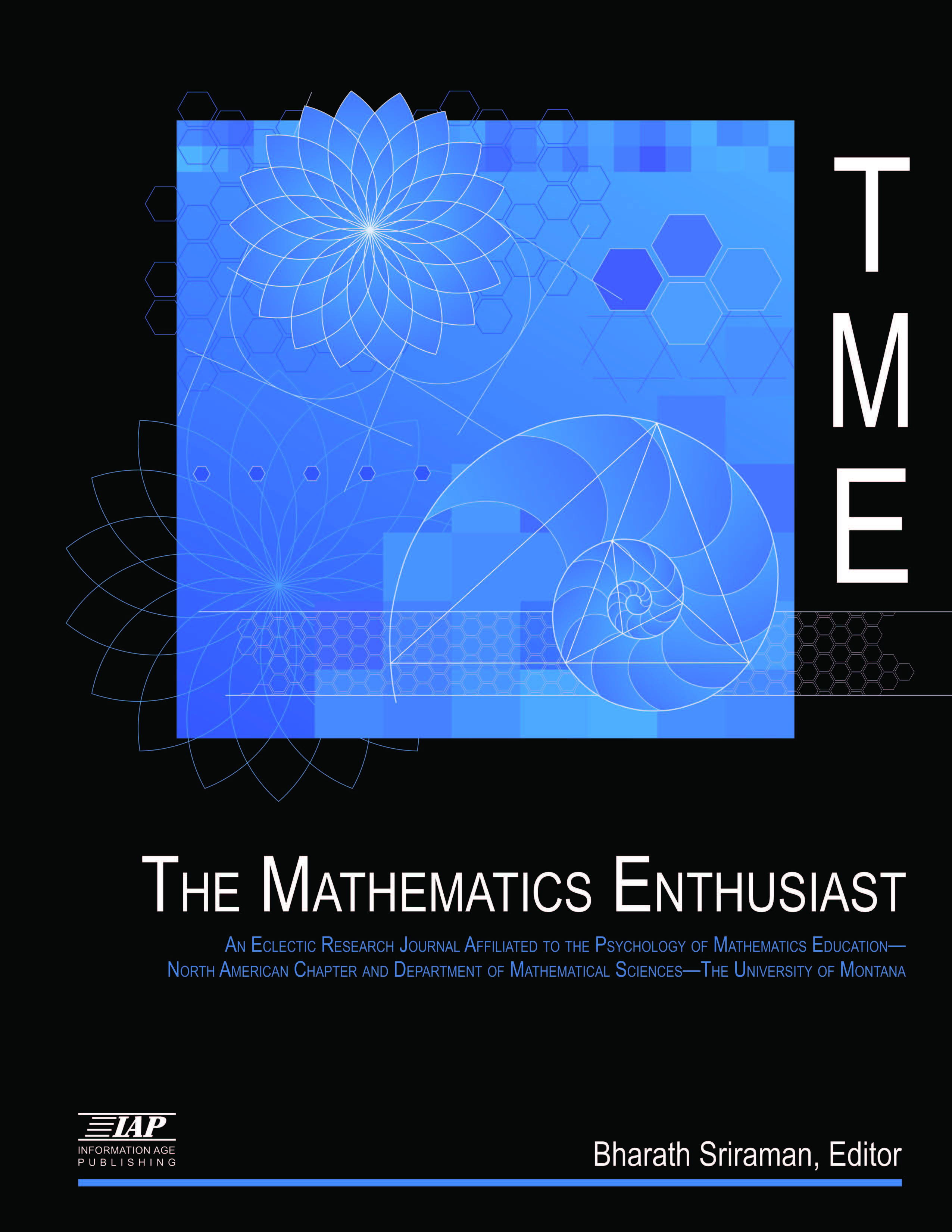
Volume
21
Issue
1-2
Abstract
Consider a 1 x 3 grid whose top-left vertex is connected to the bottom-right vertex of each of the unit squares. What is the sum of the three acute angles formed by the connecting segments with the unit squares' bases? This is the so-called three-squares problem, often attributed to Gardner. In a recent academic year, the author used a video on this problem, produced by the YouTube channel Numberphile, for a group project in a first-semester undergraduate module: Mathematical Problem Solving. The project involved collaborative writing on the problem and individual completion of a peer-assessment form. We report the outcomes of this project, which give rise to both theoretical and pedagogical discussions. The theoretical discussion comprises seven alternative solutions to the problem, as well as a generalisation to the case of identical parallelograms forming an arbitrary-sized grid whose top-left vertex is connected to the bottom-right vertex of each parallelogram. The pedagogical discussion highlights the peer-assessment form's effectiveness in detecting unequal group members' contribution, as well as the students' inadequate communication skills. The latter, which has consistently raised concerns, subsequently led to the module being developed and renamed as Mathematical Writing and Reasoning, whose realisation commenced the following academic year.
First Page
467
Last Page
484
Recommended Citation
Hoseana, Jonathan
(2024)
"Using Gardner's Three-Squares Problem for a Group Project in a Mathematical Problem Solving Module,"
The Mathematics Enthusiast: Vol. 21
:
No.
1
, Article 26.
DOI: https://doi.org/10.54870/1551-3440.1638
Available at:
https://scholarworks.umt.edu/tme/vol21/iss1/26
Digital Object Identifier (DOI)
10.54870/1551-3440.1638
Publisher
University of Montana, Maureen and Mike Mansfield Library
